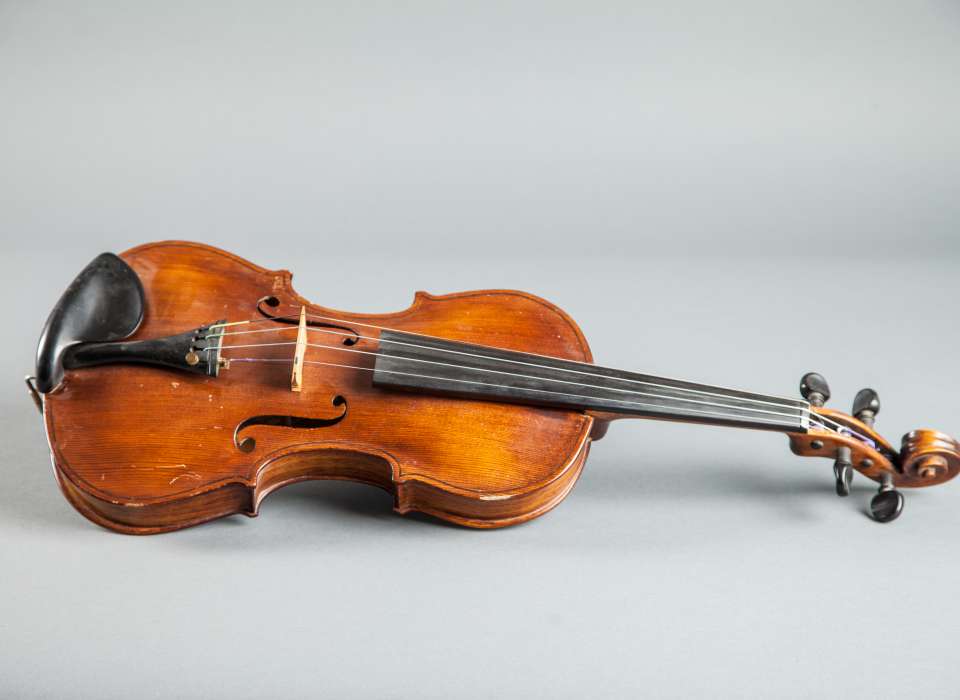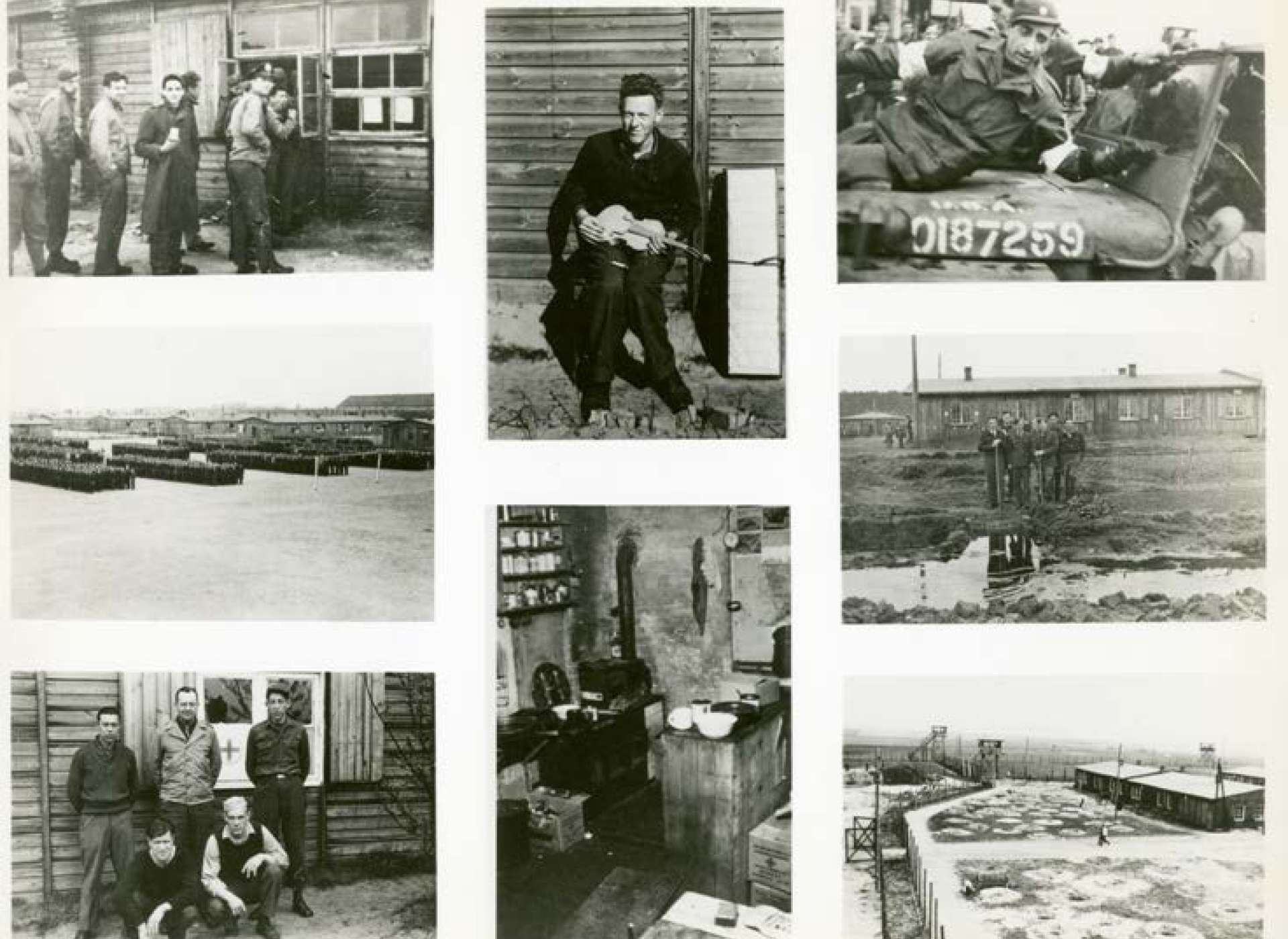For American prisoners of war in Europe—with the primary objectives of combat removed from them—boredom, futility, and helplessness became enemies to be combated as tenaciously as the Nazis. In this fight, American POWs showed incredible drive and ingenuity in creating platforms for self-expression and preservation.
The woodwork crafted by Clair Cline in Stalag Luft I in 1944 is a prime example of this resourcefulness. Cline used scavenged wood—bed slats, table legs and aid cartons—to bring life to a model of the plane in which he was shot down, a B-24, as well as a violin. For both the model and violin, Clair worked with makeshift tools like broken glass and table knives, using glue scraped from the bottom of German mess hall tables for adhesive. It took Cline four months to finish his masterpiece, but he completed the violin in time for a concert in his barracks on Christmas Eve 1944.
Cline’s violin became famous in Stalag Luft I, and many men recalled seeing it and hearing of it. Cline and his violin are remembered by former POW and Museum artifact donor Irwin Stovroff in the journal he kept in Stalag Luft I, also a donation to the Museum’s collection. Following the liberation of Stalag Luft I and the war’s end, the violin was part of an exhibition of POW life that traveled the country from October 1945 to September 1946. It was viewed by over four million Americans. In many of the venues, it was played by popular violinists. In a recording made on the Denver tour in May 1946, the speaker remarks that hearing the violin “makes you feel proud of the boys that we were associated with and proud of all Americans that they’re capable of doing these things that are unbelievable.” In the Cline family, the Stalag Luft I violin stood as a symbol for the spirit of resourcefulness. Cline, who went on to become a cabinetmaker, passed away in 2010, leaving behind a strong musical legacy—his son, a grandson, and a granddaughter all play with major orchestras.
Gift in Memory of Clair Cline, 2012.391
For more on American POWs in Europe, please visit Guests of the Third Reich: American POWs in Europe.
-

Gift in Memory of Clair Cline, 2012.391
-

From a photoset from Stalag Luft I, Clair Cline and his violin in Stalag Luft I
Kim Guise
Kimberly Guise holds a BA in German and Judaic Studies from the University of Massachusetts Amherst. She also studied at the Universität Freiburg in Germany and holds a masters in Library and Information Science (MLIS) from Louisiana State University. Kim is fluent in German, reads Yiddish, and specializes in the American prisoner-of-war experience in World War II.
Cite this article:
MLA Citation:
APA Citation:
Chicago Style Citation:




![Max Fuchs, New York City cantor, sings as Rabbi Sydney [sic] Lefkowitz, Richmond, VA, conducts the first Jewish services from Germany.](/sites/default/files/styles/max_650x650/public/2025-10/image1.jpg)






